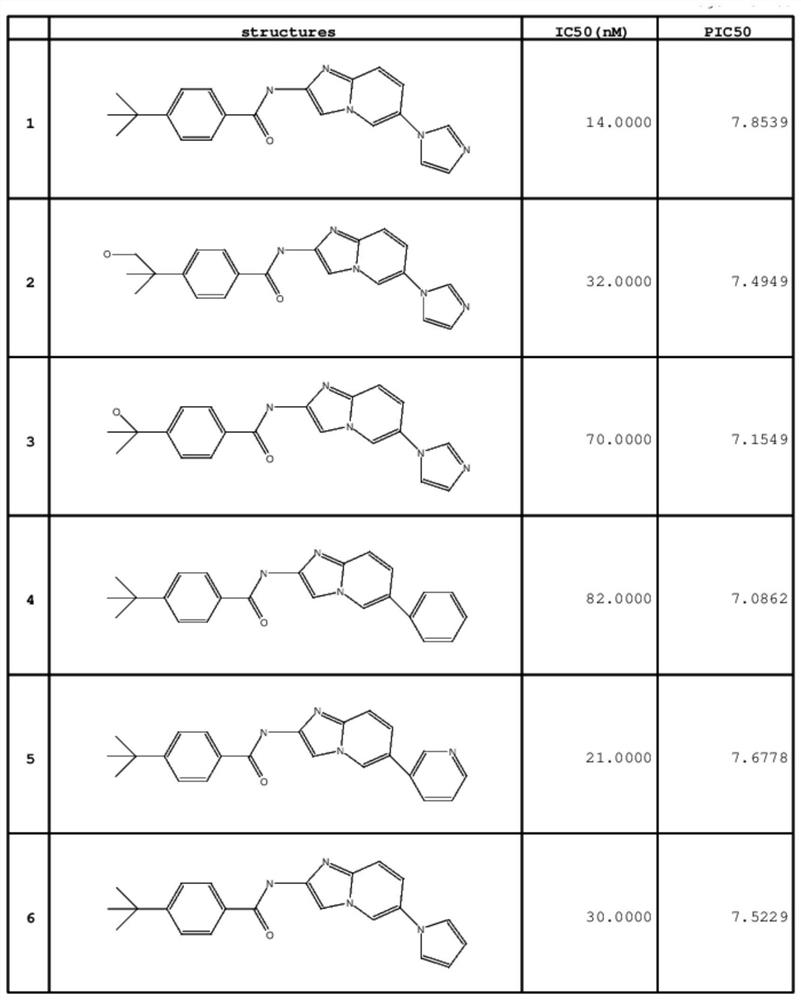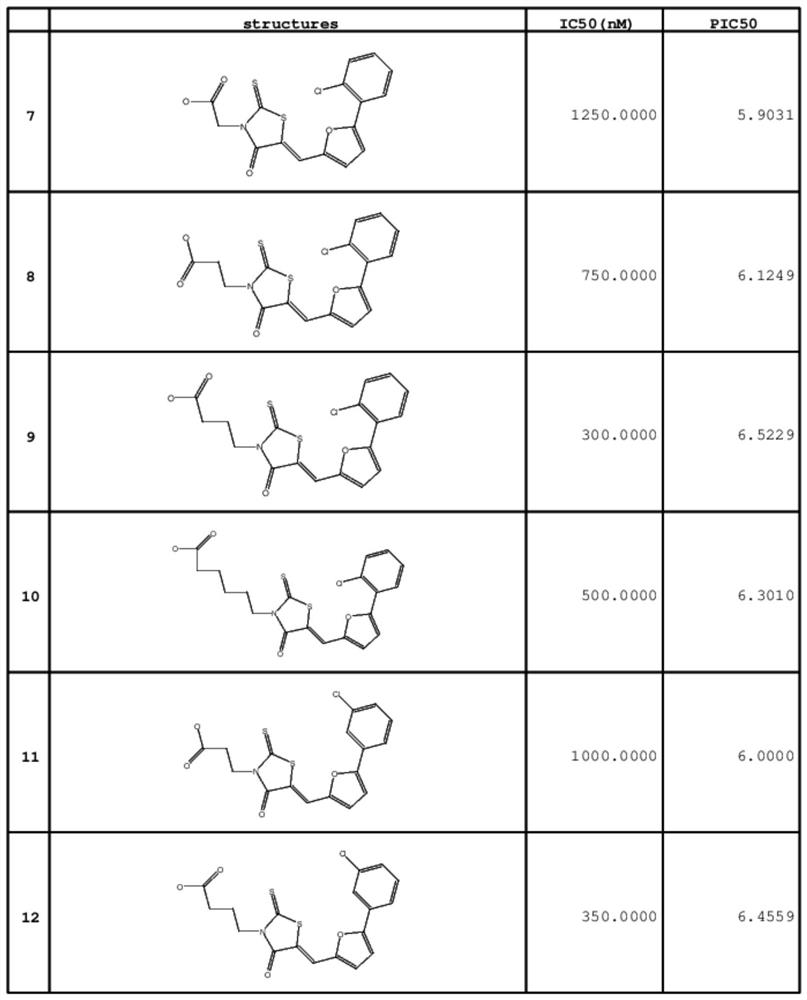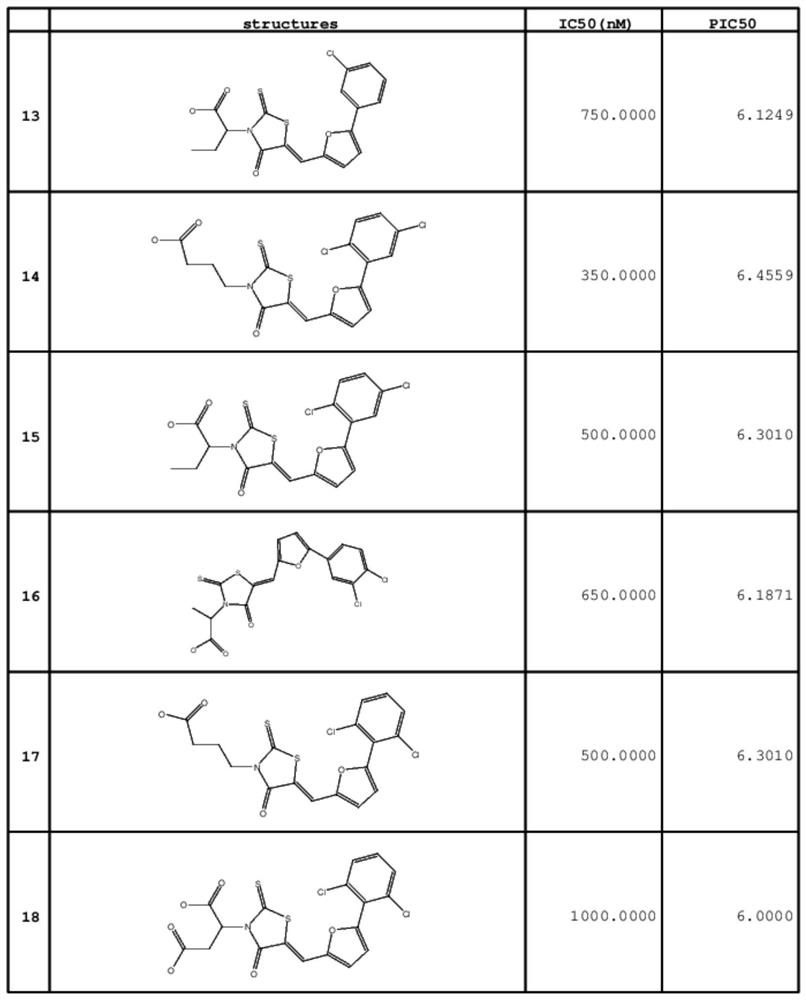Method for predicting ASK1 inhibitory activity based on quantitative structure-activity relationship model
A quantitative structure-activity relationship and inhibitory activity technology, applied in chemical machine learning, molecular design, chemical data mining, etc., can solve problems that cannot be displayed intuitively, and achieve experimental cost saving, high model accuracy and high model accuracy Effect
- Summary
- Abstract
- Description
- Claims
- Application Information
AI Technical Summary
Problems solved by technology
Method used
Image
Examples
Embodiment Construction
[0048] The technical solutions in the embodiments of the present invention will be clearly and completely described below with reference to the accompanying drawings in the embodiments of the present invention. Obviously, the described embodiments are only a part of the embodiments of the present invention, but not all of the embodiments.
[0049] The method will be further described below through specific examples and in conjunction with tables.
[0050] A method for predicting ASK1 inhibitory activity based on a quantitative structure-activity relationship model, comprising the following steps:
[0051] S1. Collection of data
[0052] Collect experimental data by reviewing the literature. A dataset of 232 ASK1 small molecule inhibitors was established. 232 small molecule inhibitors from 16 papers and patents were selected. The data collected include the structure of the small molecule and the value IC50 for its ability to inhibit activity.
[0053] S2. Dataset processing...
PUM
 Login to View More
Login to View More Abstract
Description
Claims
Application Information
 Login to View More
Login to View More - R&D
- Intellectual Property
- Life Sciences
- Materials
- Tech Scout
- Unparalleled Data Quality
- Higher Quality Content
- 60% Fewer Hallucinations
Browse by: Latest US Patents, China's latest patents, Technical Efficacy Thesaurus, Application Domain, Technology Topic, Popular Technical Reports.
© 2025 PatSnap. All rights reserved.Legal|Privacy policy|Modern Slavery Act Transparency Statement|Sitemap|About US| Contact US: help@patsnap.com



